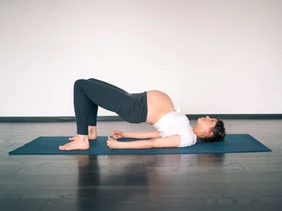by Adelle Smener, DPT
Blood Flow Restriction training has continued to become an increasingly popular mode of exercise in the rehab world due to its fast and efficient results for strengthening and hypertrophy. Research has shown that strength and hypertrophy adaptations can even occur as soon as 1-3 weeks with BFR!
One of the things that makes Blood Flow Restriction Training such an invaluable tool for quick and efficient strength training is its clinical application to a wide array of people and injuries/conditions. Several studies have shown significant changes in strength and hypertrophy in the both pediatric and geriatric populations for a wide array of conditions including, but not limited to, pre-operative rehab, post-operative rehab, tendinopathies, osteoporosis and osteoarthritis.
If you check out the Basics of BFR post, you’ll notice that if you fall into any of these categories, you’re likely load-compromised. This means that you need to get stronger in order to reach your therapy goals, but can’t yet handle the loads required to strengthen the surrounding musculature. So let’s delve into this a little more to help you decide if BFR is right for you!
Prehab
The newest trend – and one of great value and importance that hopefully never goes out of style – is pre-rehabilitation, meaning rehabilitation prior to a major surgery. The purpose of prehab is to set you up for optimal results following your surgery. This often includes improving range of motion, decreasing swelling, improving muscle activation and, of course, getting stronger. So imagine this: you just tore your ACL and surgery is 6 weeks away. Did you know one of the greatest predictors for successful results following an ACL reconstruction is good quad activation and strength prior to surgery? But how do you get that if you can barely move your leg?!
Using BFR for prehab prior to surgery can help activate and strengthen muscles with minimal load, permitting you to push a muscle to fatigue with minimal pain and damage to compromised structures. This allows you to perform simple, pain-free table exercises with low loads that can ACTUALLY get you stronger and bigger! In turn, this will facilitate a quicker timeline of returning to improved functional independence (ie. stairs, sit-to-stand, walking) before going into surgery.
Post-Operative Rehab
Now, you just got out of surgery and, whether due to pain or postoperative restrictions, you can barely use your arm or leg. How does BFR apply to you?
BFR can be implemented as early as you are cleared for PT and all incisions are closed (given no extenuating circumstances or contraindications). Research has even shown that BFR can be implemented using a cell swelling protocol, aka BFR with no active exercise, to minimize muscle atrophy during this early stage of post-op rehab. The cell swelling protocol usually consists of 3-5 five minute cycles of full or almost full occlusion, supervised by your PT. This method of BFR implementation can be used passively or even in conjunction with manual therapy to not only minimize atrophy, but also help prepare the patient for the use of BFR with active exercise in the next stage of their rehab.

Another way BFR can be implemented immediately following surgery is with a strengthening program for your other arm/leg. For many, following surgery we rely heavily on our non-injured extremity to get around our house, community, cook meals, shower, etc. so it’s important that our opposite arm or leg is strong enough to bear the increased load we’re putting on it while the surgical side heals. Furthermore, strengthening our opposite side actually can get the surgical side stronger through connections in the brain – SO COOL! And let’s be serious, the last thing we want to worry about is our other leg/arm giving us problems at this point!
Once you’re ready to proceed with active muscle recruitment and active range of motion, that’s where the real fun begins! Stay tuned for more on BFR, and please don’t hesitate to reach out with questions!




